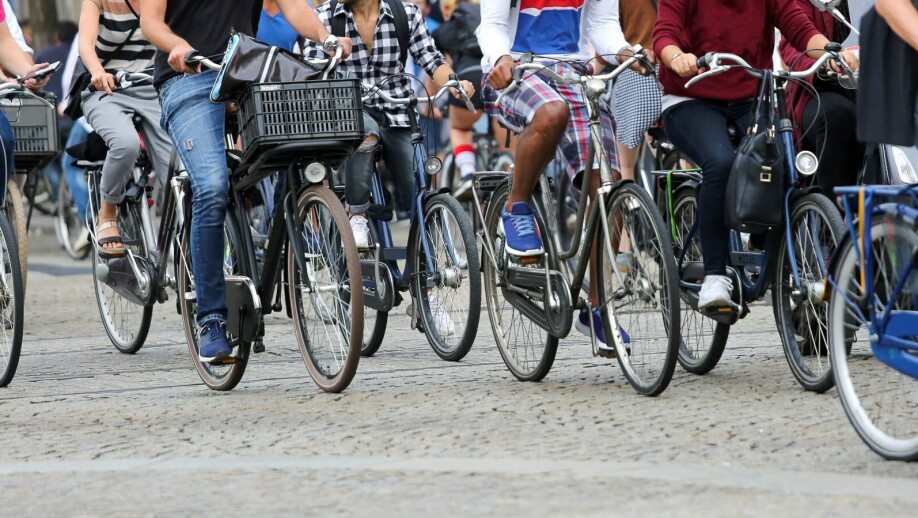THIS ARTICLE/PRESS RELEASE IS PAID FOR AND PRESENTED BY The Norwegian School of Sport Sciences - read more

Major health and financial benefits to be gained from cycling to work
If more people were to cycle to work they would be healthier and live longer and society would save large sums of money. Even e-cycling would achieve the same results.
The most remarkable thing revealed in a new study about cycling to work is how little it takes before the health benefits start to show. Even a weekly trip to and from work significantly reduces the risk of so-called cardiovascular diseases and that even applies if you make the trip on an e-bike.
In order to encourage more people to sit on two wheels we need better cycle paths. However, in order to achieve this, both local and national measures need to be more thoroughly evaluated than is currently the case; without such measures we would not know what works best.

Such investments would benefit society, but the greatest benefits would be achieved by implementing these properly. In order to facilitate this, Solveig Nordengen has developed a completely new counting tool. More about that later.
It doesn’t take much
This is about your health and my health and it is a practical solution for improving our health: physical activity reduces the risk of cardiovascular disease which causes serious ailments or at worst kills the person affected.
Cycling to work is a convenient way of regularly combining transport and physical activity over a short period of time. That is why Solveig Nordengen chose to study it.
Her study shows that cycling – even if it is done only once a week – reduces the risk of such complaints by 22 per cent, or by just over one fifth.
"Twenty-two per cent is a significant reduction. So making it possible for more people to cycle to work is an excellent public health measure," says Solveig Nordengen.
This reduction occurred, even though most of the cyclists in Ms. Nordengen's study cycled less than five kilometres when going to work and most of their trips took place in fairly flat areas.
Live longer
Making such a commitment to active cycling is also important because it would encompass many people. The study shows that neither the extent nor the intensity of cycling to work are as important as one might think. In other words: you don't need to cycle to work every day and you don't have to go flat out. Even cycling ‘with a bit of help’ – e-bikes – is enough.
“In terms of health benefits, even just cycling a little bit is very good. And the benefits of using e-bikes are almost as good as those acquired from normal cycling,” she says. “The opportunities presented by e-bikes lower the barrier to cycling to work considerably, providing you with health benefits that you would not otherwise have had.”
This also ties in well with the recommendations of the World Health Organisation (WHO), i.e. ‘every step counts’
Furthermore, the health benefits are proving to be equally beneficial for men and women. Most women have something to be gained from this – because so few women cycle to work today.
“A reduced risk of cardiovascular disease means that, on average, you will live longer. In theory a 22 per cent reduction in the risks involved would mean that you could expect to live up to several years longer.”
- The health benefits of cycling are 21 times greater than the risks involved in sustaining injuries.
- In Denmark it has been estimated that around 5,700 cases of cardiovascular disease are avoided annually due to an increase in the percentage of people cycling in the population.

Huge benefits
The most active cyclists who cycle to work can be found in densely populated areas and among people who cycle less than five kilometres to work, in areas that are not very hilly. A dense population is exactly the reason why people might want to cycle; probably because it takes too long to travel by car. It is also likely that other factors such as workplace adjustments may have an impact, but these have not been included in this survey.
“Anyone planning to make adjustments by creating new or better cycle paths should bear these factors in mind. More people live in densely populated areas and a higher percentage of these will more easily resort to cycling. Consequently in such areas society will enjoy the best returns on its investments,” says Solveig Nordengen.
“In any case, making such adjustments is a very important public health measure. And the costs involved would largely be covered by the cost of treating cardiovascular diseases. How much will depend on the type of measures employed.”
She believes that the authorities used to invest a lot more in this respect, often on particularly vulnerable groups ranging from minority groups that generally cycle less – to the elderly or, for example, obese people, who will have a lot to gain from getting in better shape.
Counting and evaluating
Some of the measures designed to encourage more people to cycle are well known: a continuous network of cycle paths and a sense of security are two of the most important things (the latter applies to women in particular), alongside factors such as the number of junctions, time spent, parking conditions – and the number of other cyclists.
However, in order to move forward – to assess measures and invest correctly in new ones – we need to know how well such measures work, i.e. how many people were cycling before and after they were implemented. That has not really been done.
Solveig Nordengen has therefore built a completely new, permanent counting tool. All of the 89 counters that existed in 2018 were included in her study at the time, while a total of 209 counters have been set up and connected during the autumn of 2021.
“You have to evaluate local measures. Otherwise we will be building cycle paths, trails and crossroads facilities, etc. without subsequently measuring the effects. If we are to obtain the greatest possible returns on our investments, and that includes any health benefits, we need to know what works and implement measures that would be most appropriate for those areas in which society obtains the best value for its money.”
PS
One specific result of Ms Nordengen’s counting is that it shows the impact of the coronavirus:
Compared to 2018, cycling initially decreased by 4 per cent during 2019, but it then increased by 11 per cent in 2020.
“So it would seem that the coronavirus has had a certain amount of positive impact on health, although it is hard to say exactly how much.”
See more content from The Norwegian School of Sport Sciences:
-
Football expert wants to change how people watch football at home
-
Kristine suffered permanent brain damage at 22: "Life can still be good even if you don’t fully recover"
-
Para sports: "The sports community was my absolute saving grace"
-
Cancer survivor Monica trained for five months: The results are remarkable
-
What you should know about the syndrome affecting many young athletes
-
New findings on how athletes make the best decisions





































